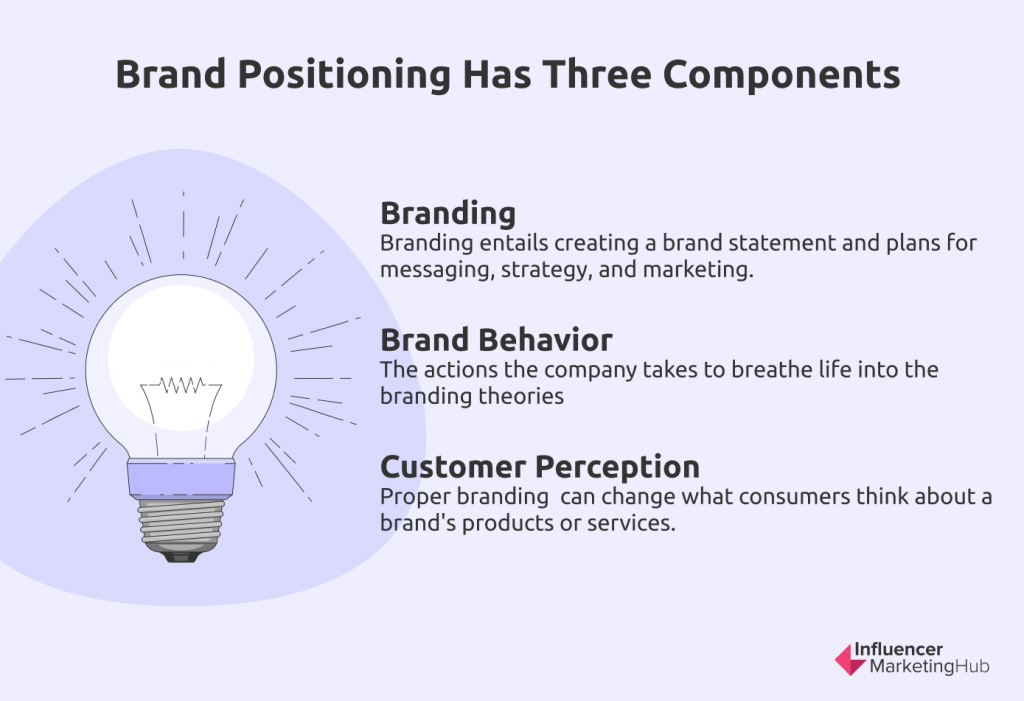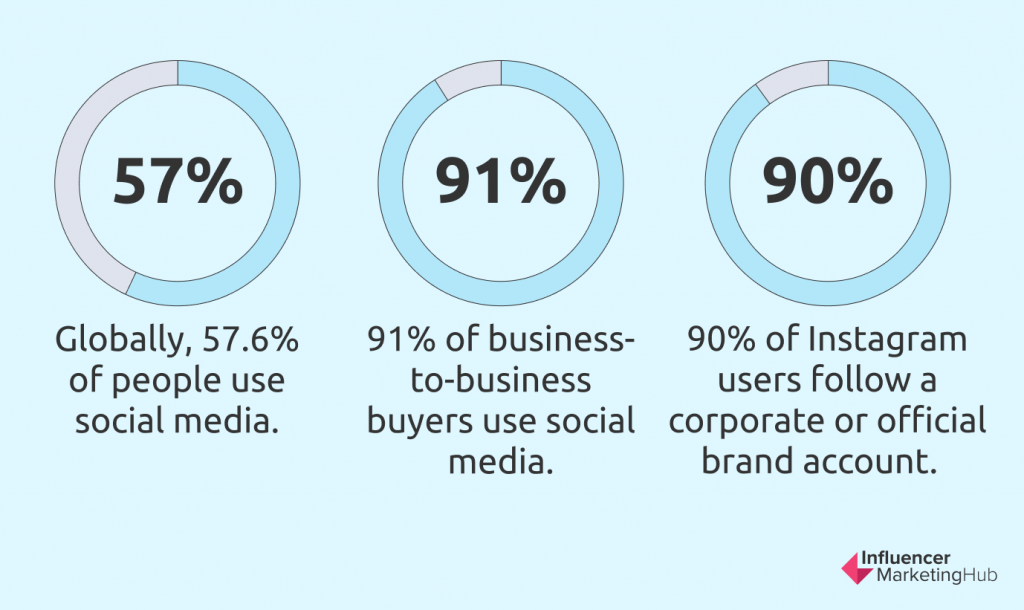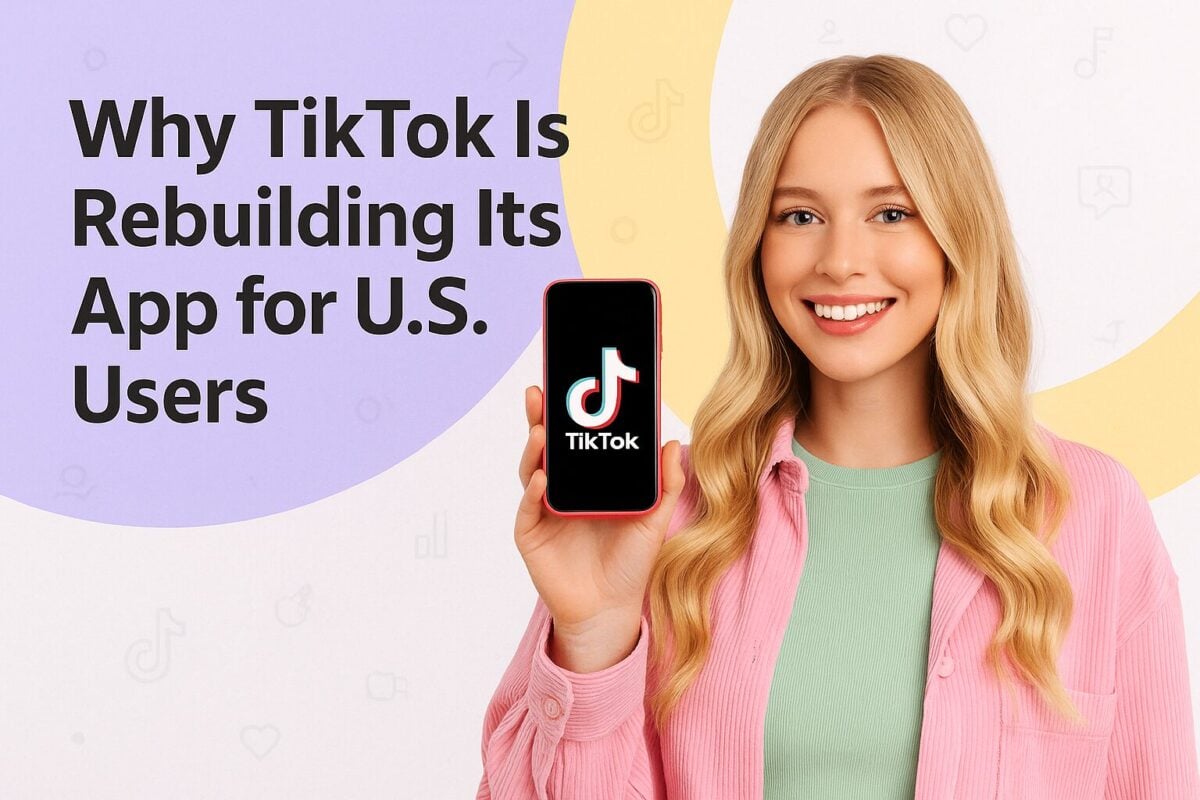One of the main reasons people buy from a company is trust. Credibility can swiftly build the value of a company. Some well-reputed and trusted brands have essentially become generic names for identical products or services.
Notice how people say Kleenex when they really mean tissue. Or they say Xerox when they should say photocopier. Or mention Crock-Pot when they’re referring to a slow cooker. Successful companies, such as these brands, have a common denominator: solid brand positioning.
The positioning of your brand affects how consumers view your product and your company’s ability to satisfy their needs. It likewise establishes your niche and identifies your competition. And if properly positioned, it influences how much consumers are willing to spend their money on your product.
The stakes are high, so developing strong brand positioning strategies should be your top marketing priority.
Brand Positioning on Social Media and Why It Works:
Brand Positioning Explained

In 1969, advertising executive Jack Trout coined the word “positioning.” He defined it as what advertising does to a product in a customer’s mind. In that vein, brand positioning pertains to what you want your brand to be in the minds of customers.
Branding distinguishes you from your competition. It ensures that when your target clients think about your brand, they realize the benefits your company can deliver. As a result, you prove your brand’s value to your market audience.
Brand positioning has three components:
Branding. This is how a company wants to be seen by its target audience. Branding entails creating a brand statement and plans for messaging, strategy, and marketing. Branding is the theoretical stage that requires the proper implementation to get the desired outcome.
Brand behavior. These are the actions the company takes to breathe life into the branding theories. These include activities that show customers what your company stands for.
Customer perception. Through proper branding, a company can change what consumers think about its products or services. The perception of your target audience is indispensable because it measures the efficiency of your marketing plans.
It’s important to note that branding is more than just your company logo or slogan. You build a brand by being consistent in every interaction with your customers. You have a positive brand position when your audience thinks of your brand as credible, valuable, and favorable. The combination of these three elements gives your company its brand identity. And when you have an identity, it becomes easy for your customers and prospects to remember your products or services.
In essence, brand positioning is the core of every digital marketing strategy. The goals of brand positioning vary per business. But in general, you position your brand so that your target market views it as:
- top-tier
- having excellent value
- the superior choice
- satisfactory
- trustworthy
The Importance of Brand Positioning
Big companies spend a lot on their branding to cement their identity. Think how people immediately know it’s McDonald's when they see an “I’m Lovin’ It” ad. Marketing teams work hard to build this kind of connection. And most of the time, it takes years of smart advertising to achieve this status.
Companies reveal in a survey that if they had consistent branding, they would expect to sell 10% to 20% more. Branding is related to your brand reputation as well. When you own a business, it develops a rep. You’ll need a brand positioning plan to help manage your reputation and protect your brand image.
Moreover, brand positioning:
Spells the difference. Standing out from the competition is vital. As a brand, you must show your target audience what you can bring to the table, what makes your product unique, and why they should trust your company. Brand positioning helps you achieve all this.
Strengthens the business. Having a solid brand position boosts the value of your company. Before making a purchase, customers think about the benefits they can get from your product and how well you can meet their needs. How you position your brand to meet these demands directly impacts the likelihood of a prospect turning into a repeat customer.
Evokes the right emotions. Brand position tactics and goals vary. Your positioning and messaging will differ based on what you offer and your business model. And most of the time, what you offer isn’t that much different from your competition. The clincher is the feelings attached to the buying process. And these feelings vary too. To a buyer, it can be a relief to finally buy a product they can trust or joy in finding a reasonably priced item.
Brand Positioning on Social Media
There are tons of brand marketing strategies that you can explore and use. Social media branding is one of the most effective.

Social media helps a company promote its vision, display its value, engage employees, and develop emotional connections with customers. The numbers prove it. Globally, 57.6% of people use social media. 91% of business-to-business buyers use social media. 90% of Instagram users follow a corporate or official brand account. Your brand’s social media (or lack thereof) speaks as much about your messaging as your actual content.
So how do you position your brand on social media?
Choose the proper social media networks
Don’t spread yourself too thin. Your brand doesn’t have to be on all social media platforms. Look for the ones your target market uses the most. Your company may need to adjust its brand message to match the demands of your target audience once you’ve identified the platforms.
Engage with your followers regularly
Upload quality content to your social media platforms. Regardless of the industry, your audience is always hungry for new content. As such, your brand should evolve and adapt to these demands. Benefit from your existing audience by offering more information, answering questions, soliciting feedback, or running a contest.
Provide value to your posts
Don’t become a company that talks only about itself. Instead, launch a relevant campaign that highlights your consumers. Post inspiring stories about your employees. Keep up with global events, and find a way to incorporate them into your brand.
Set a social media goal
There are several reasons why your brand should be on social media. You may need to be on Twitter to provide better customer service. Or perhaps you want the TikTok community to be aware of your new products. Setting a goal helps to track the brand’s growth easier. These goals are crucial, and companies sometimes hire social media managers to look after their accounts.
Create multiple profiles for different purposes
Having multiple profiles on one social media site could suit a big company or organization. These profiles help the brand target specific markets and deliver the right content. A sports team, for example, can have multiple Twitter accounts: one as the official profile, one for merchandise, and one for the team mascot.
Be ready for any social media snafu
Remember Adidas’ huge blunder? They sent their clients a “Congrats, you survived the Boston Marathon!” email. Some people took to Twitter to express their displeasure, claiming that the message made light of the 2013 Boston Marathon bombing. Instead of ignoring the issue, Adidas made a public apology and acknowledged their mistake.
A genuine and sincere apology can go a long way to rebuilding your brand’s good name when you make a mistake. If the blunder isn’t as serious as Adidas’, you can try humor to make up for it. However, make sure that your message has the right tone. The takeaway here is to be ready and willing to fix the mistake.
Successful Brand Positioning on Social Media
Here are 10 examples of companies with strong brand positions on (and off) social media.
Starbucks
Starbucks has done a great job of positioning itself by concentrating on first-rate customer service. The brand’s social channels are full of photos and videos of people enjoying their beverages. Writing their customer’s name on the container has become a culture that the customers love, as evident in the millions of posts about it.
The key to Starbucks’ success on social media is having an astute understanding of their audience, particularly the young people. In 2017, they launched Unicorn Frappuccino for a limited time only, which sparked the craze of Instagrammable food and drinks. The company continuously hype its seasonal events and drinks too. To date, #PumpkinSpiceLatte has over 720,000 posts on Instagram.
Nike
Nike’s another brand that has a keen grasp of its market. The focus is on athletes and sports teams rather than just their merchandise. As such, their market reach expands. For example, a buyer may prefer another shoe brand yet purchase Nike shoes thanks to LeBron James’ endorsement.
Nike has a large following on Facebook and Twitter, but their hub is on Instagram. The brand shares HD photos and videos of athletes in action. #JustDoIt has over 20 million Instagram posts.
The brand also runs relevant social media campaigns. During the pandemic lockdown, Nike launched “Play for The World” to encourage social distancing. The project—which involved athletes, influencers, and the public—aimed to inspire unity and hope.
National Geographic
With over 207 million followers, National Geographic is one of the brands with the most followers on Instagram. Nat Geo credits the brand’s appeal to its visual narrative.
National Geographic gives its photographers artistic autonomy, making the content original and authentic. Even the captions are written by the photographers, providing a distinct perspective on the subject.
Through its social media page, the brand is able to raise awareness about various global issues. It also partners with other brands to expand its reach. In 2018, it teamed with Stella Artois and launched “The Moment” series for World Water Day. The campaign reaped over 2.7 million engagements in a day.
Lego
There are 13.9 million people who follow Lego’s YouTube channel, which is the focus of Lego’s marketing strategy for content delivery and branding. The popularity of Lego fan-based channels where people show off their Lego creations highlights the brand’s immense presence on the platform.
The company also made Lego Ideas, a site where creators can submit their Lego inventions and concepts, which may lead to an official set. Apart from this being an exciting opportunity for Lego builders, it also expands Lego’s branding activity, positioning it at the top of its field.
Wayfair
Wayfair is a brand that leverages Instagram’s shopping features effectively. The brand’s IG feed makes it easy for people to spot home decors they like and subsequently buy them instantly.
Wayfair often uploads photos to inspire and inform its audience. There are also home decorating videos that show various ways of upgrading rooms and spaces using Wayfair products. To increase engagement, the brand often gives out freebies too.
Dove
Dove is well-known for its TV ads featuring women empowerment. The brand’s social media pages promote the same message. Dove posts photos and videos of women of all ages and skin tones to demonstrate that beauty comes in all sizes and forms.
Dove uses social media to promote various campaigns aimed at specific groups. They launched the “Courage is Beautiful” campaign to celebrate frontline healthcare workers. They also launched the #NoDigitalDistortion movement, which raises awareness of the dangers that filters and image manipulation pose to today’s youth.
Merriam-Webster
Yes, 'love' is always a top search around Valentine's Day.
No, we can't tell you how long it lasts. (Sorry.) https://t.co/KozXRfxeGC
— Merriam-Webster (@MerriamWebster) February 14, 2022
Merriam-Webster’s Twitter account is arguably one of the coolest in the Twittersphere. The brand has amassed a dedicated following of over 970,000 followers by tweeting Word of the Day, linguistic facts and observations, definitions and grammar rules, and lookup trends.
By utilizing a witty and confident tone, the brand effectively establishes itself as the go-to account for wordplay. Reading the dictionary’s Twitter feed is like making small talk with your favorite English teacher: it’s both educational and entertaining. The brand also delivers awesome clapbacks. Its humor makes it more accessible to all.
Coca-Cola
A list of successful brand positioning isn’t complete without Coca-Cola. For 130 years, the company has refined and solidified its brand position. Throughout the years, Coca-Cola’s message remained the same, focusing on pleasure, friendship, joy, and sharing as its central themes. This uplifting message has heightened customer interaction and inspired people to share their joyful experiences.
Coca-Cola’s core values are also prominent across its social media campaigns. For example, in 2018, the company inaugurated #RefreshTheFeed, which updated the brand’s social media feeds with a new image. The campaign debuted on World Kindness Day, highlighting the brand’s message of positivity and inclusivity. It reached over 69 million impressions and 1.4 million engagements in a single day.
Frequently Asked Questions
What is brand positioning?
Brand positioning is the process through which a company strategically builds, strengthens, and solidifies its identity and position in the minds of its target market.
Why is brand positioning important?
Brand positioning is critical to a company's success because it aids the company in distinguishing itself from the competition. If you want your customers to believe in your brand, you need to show them what you're capable of, what makes your product stand out from the competition, and what makes you an authority in your niche. You can achieve these goals with the help of brand positioning.
What is brand positioning in social media?
Brand positioning on social media is one form of marketing tactic that can increase customer engagement and boost corporate value. Social media branding can use different methods like launching a social media campaign on Twitter, giving out rewards or freebies via hashtags, establishing authority on YouTube, and sharing entertaining Reels and TikTok videos.
What are the examples of successful social media branding?
There are tons of brands that have successfully positioned themselves as a brand authority in their niche. Good examples of these brands are:
Starbucks
Nike
National Geographic
Lego
Wayfair
Dove
Merriam-Webster
Coca-Cola


